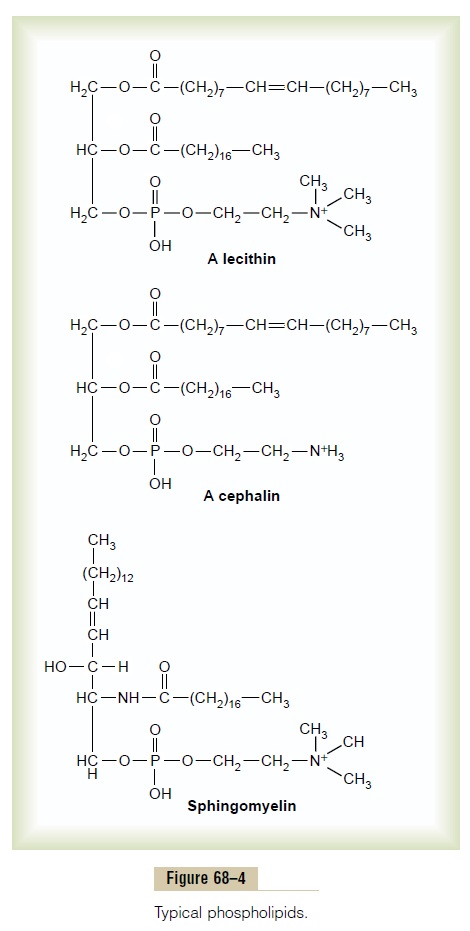Chapter: Medical Physiology: Lipid Metabolism
Phospholipids
Phospholipids
The major types of body phospholipids are lecithins,cephalins, and sphingomyelin; their typical chemical

Phospholipids always contain one or more fatty acid molecules and one phosphoric acid radical, and they usually contain a nitrogenous base. Although the chemical structures of phospholipids are somewhat variant, their physical properties are similar because they are all lipid soluble, transported in lipoproteins, and used throughout the body for various structural purposes, such as in cell membranes and intracellular membranes.
Formation of Phospholipids. Phospholipids are synthesizedin essentially all cells of the body, although certain cells have a special ability to form great quantities of them. Probably 90 per cent are formed in the liver cells; sub-stantial quantities are also formed by the intestinal epithelial cells during lipid absorption from the gut.
The rate of phospholipid formation is governed to some extent by the usual factors that control the overall rate of fat metabolism because, when triglycerides are deposited in the liver, the rate of phospholipid forma-tion increases. Also, certain specific chemical substances are needed for the formation of some phospholipids. For instance, choline, either obtained in the diet or syn-thesized in the body, is needed for the formation of lecithin, because choline is the nitrogenous base of the lecithin molecule. Also, inositol is needed for the for-mation of some cephalins.
Specific Uses of Phospholipids. Several functions of thephospholipids are the following: (1) Phospholipids are an important constituent of lipoproteins in the blood and are essential for the formation and function of most of these; in their absence, serious abnormalities of transport of cholesterol and other lipids can occur.
Thromboplastin, which is needed to initiate the clot-ting process, is composed mainly of one of the cephalins.
Large quantities of sphingomyelin are present in the nervous system; this substance acts as an electrical insu-lator in the myelin sheath around nerve fibers. (4) Phos-pholipids are donors of phosphate radicals when these radicals are needed for different chemical reactions in the tissues. (5) Perhaps the most important of all the functions of phospholipids is participation in the for-mation of structural elements—mainly membranes—in cells throughout the body.
Related Topics